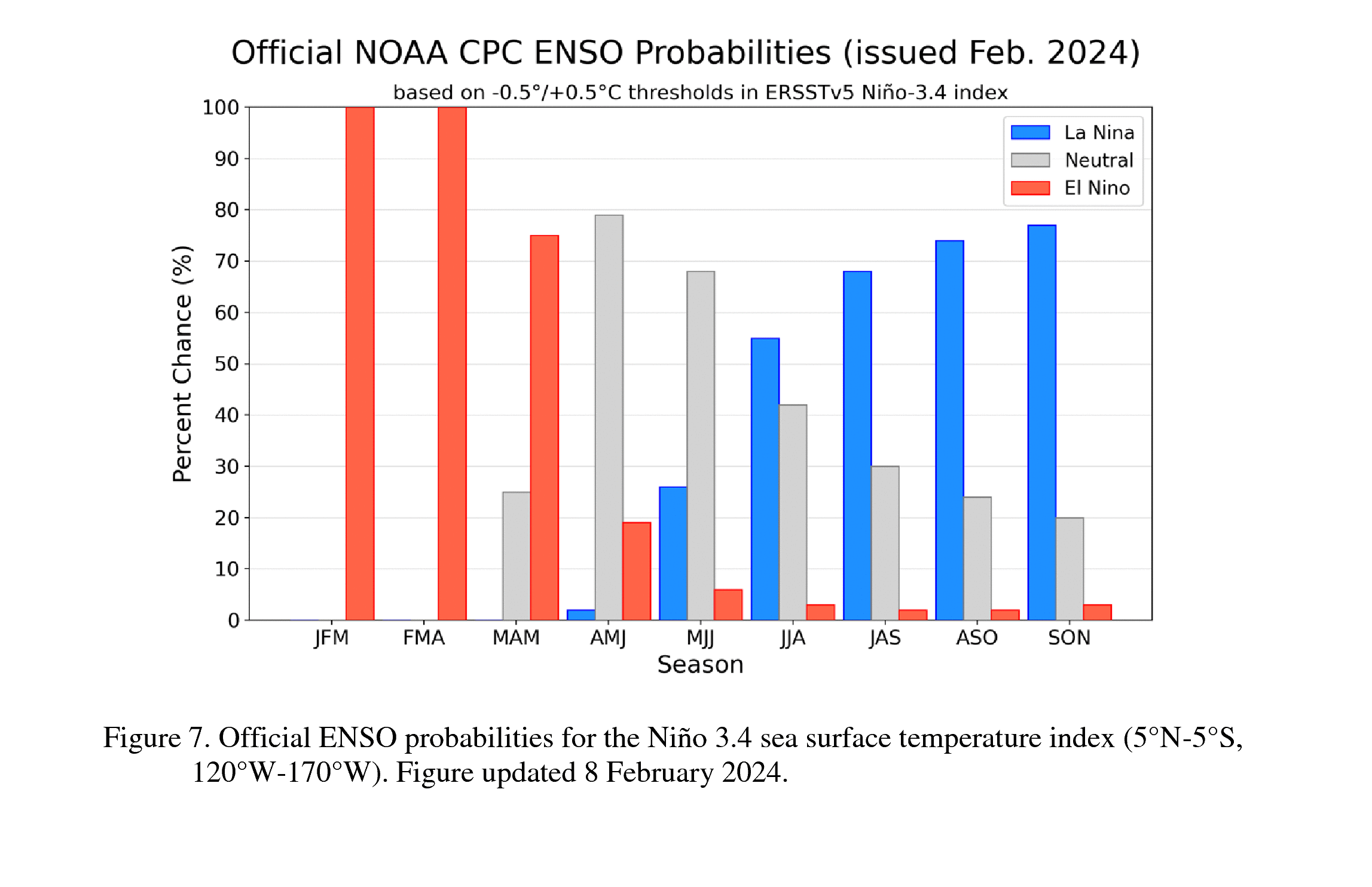We’re currently in the grips of a strong El Niño that’s been stirring up all kinds of wild weather for the past few months. However, a big change is brewing – it’s looking increasingly likely that the climate cycle will transition over to a La Niña in the next six months, bringing a host of different weather trends.
In December 2023, the NOAA predicted there was a 54 percent chance that this El Niño event would end up “historically strong.” Although not an official term, El Niño is loosely defined as “strong” when temperatures in the tropical eastern Pacific tip over 1.5 °C (2.7 °F) above average, while they’re declared “very strong” or “historically strong” if they reach the 2.0 °C (3.6 °F) threshold.
This El Niño is indeed a strong one, just as most meteorological organizations predicted. It’s packing such a punch that some are even calling it a “super El Niño.”
Along with the broad trend of climate change, the ongoing El Niño was partially responsible for making 2023 the hottest year on Earth since records began
Fortunately, the super El Niño’s strength won’t last long. It’s believed the weather event has already reached its peak strength and is currently weakening. According to the latest forecast from the NOAA’s Climate Prediction Centre, there’s a 79 percent chance that conditions will return to neutral by April-June 2024, plus there’s a 55 percent chance of La Niña developing in June-August 2024.

Graph showing the probability of El Niño, ENSO-neutral, and La Niña over the course of 2024.
Image credit: NWS Climate Prediction Center/NOAA
What Are El Niño and La Niña?
The El Niño-Southern Oscillation cycle is a pattern of climate fluctuations in the Pacific Ocean that has a global impact on the world – from wind, temperature, and rainfall patterns to the intensity of hurricane seasons and even the distribution of fish in the seas.
The cycle revolves around two phases: El Niño warm phases and La Niña cold phases. An El Niño is declared when sea temperatures in the tropical eastern Pacific rise 0.5 °C (0.9 °F) above average.
Generally, El Niño pushes global temperatures upwards, although its precise impact varies from region to region.
The warmer waters cause the Pacific jet stream to move south and extend, causing drier and warmer weather to hit northern parts of the US and Canada, but wetter and cooler weather in southern states. Over in the Atlantic Ocean, El Niño actually weakens hurricane seasons while strengthening hurricane activity in the central and eastern Pacific basins.
During the La Niña phase, we see the opposite. The cold waters in the Pacific push the jet stream northward, resulting in drier weather in the southern US, but notably wetter and colder weather in the Pacific Northwest and Canada. We also see warmer winter temperatures in the South during La Niña and cooler temperatures than normal in the North. La Niña can additionally fuel a more severe hurricane season over the Atlantic.
Although we’re currently in an El Niño phase, the past few years have been dominated by an unprecedentedly long La Niña. El Niño was officially declared in June 2023, marking the end of a “triple-dip” La Niña weather event that persisted for three years prior.
Now, it looks like La Niña is preparing for her return.
Source Link: "Super El Niño" Still Looms, But La Niña Prepares For Her Return